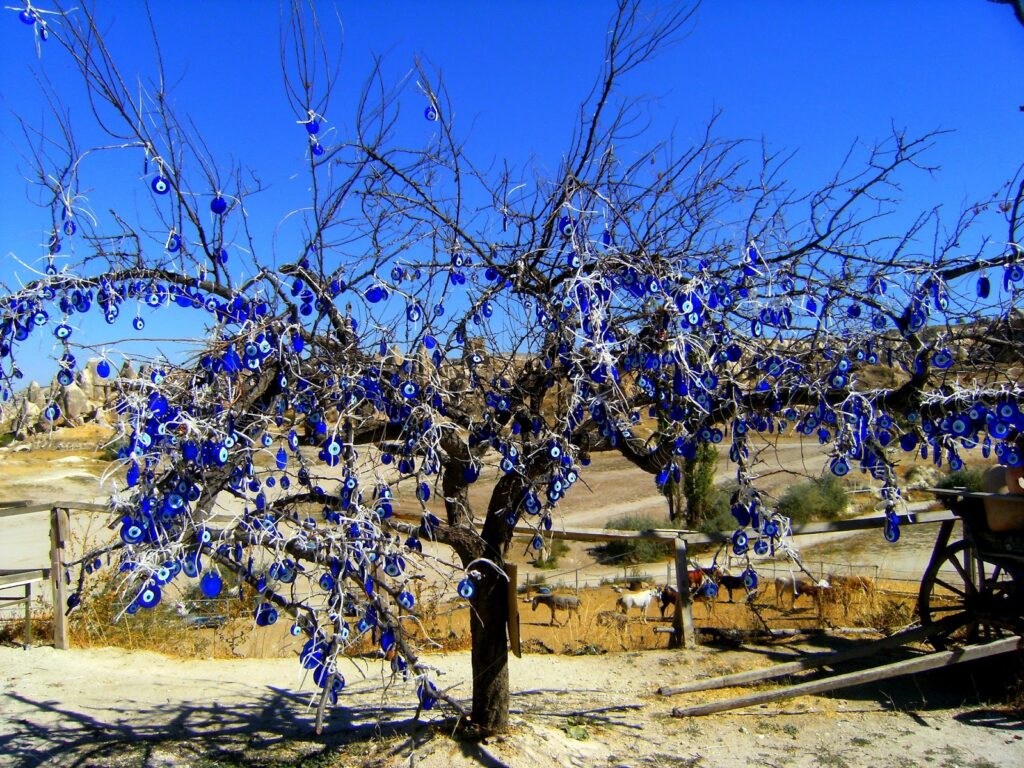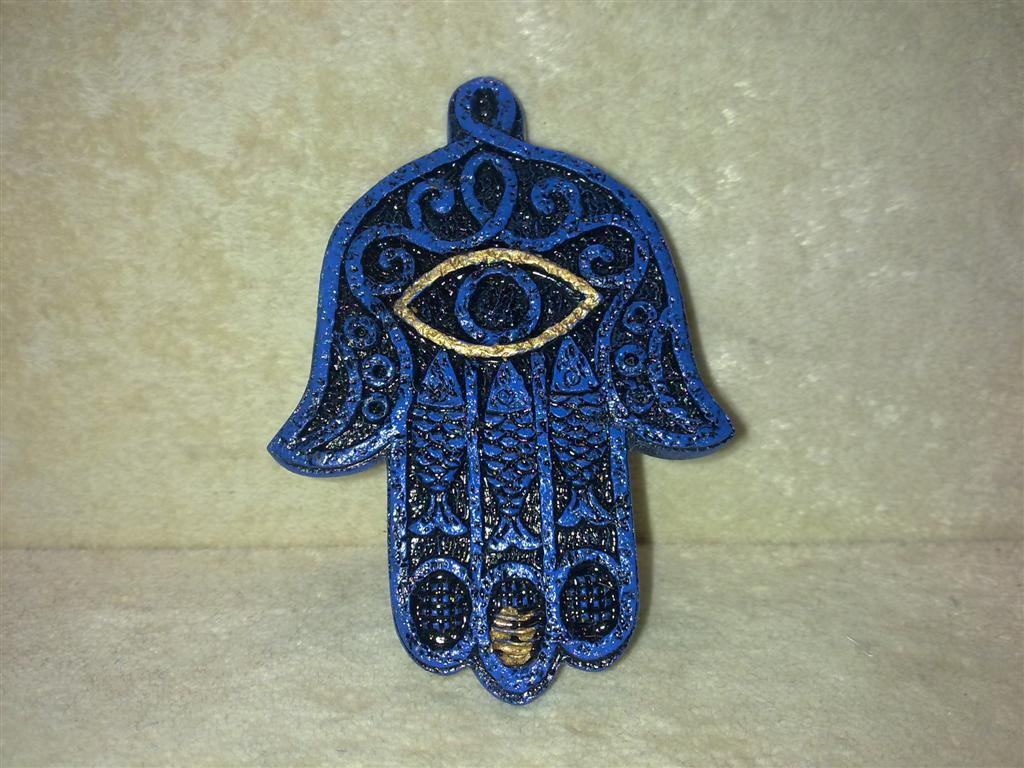Discovering the Nazar Boncuk: Turkey’s Beloved Talisman
The Nazar Boncuk (Nazar Boncuğu) – Nazar Boncuk Turkish Amulet

Nazar Boncuk Turkish Amulet! From your first moments in Turkey, you will certainly notice these blue pendants, eye-shaped, hanging everywhere, and sold in every souvenir shop.
The Nazar Boncuk is an ancient talisman that ispresent throughout the Middle East. It can be seen in Armenia, Iran, and Greece, but it is in Turkey that it is most widespread. The Nazar Boncuk is everywhere, hanging on doors, in offices, on mirrors for taxis or buses, embedded in the walls of buildings or on the subway. It’s also a very popular gift, offered to bring good fortune. And before you even realize it, you will be “contaminated” by this tradition too.



![]()
Connect with us on SOCIAL MEDIA to catch up on the latest updates and be part of our growing community!
What does it symbolize?
The Nazar Boncuk symbolizes the jealous and envious look of others, which, according to the popular belief, would have the power to cause various misfortunes to a person or his property. Turkish people believe that this amulet protects its holder from the bad energies by absorbing them.

Where does this superstition come from?
The belief in the evil eye is also widespread in Judeo-Christian culture. The Old Testament but also in the Koran.
“From within, from the heart of men, come evil thoughts, fornications, robberies, murders, adulteries, greed, wickedness, deceit, immorality, evil eye, insults, pride, folly” (Mark 7:21, 22).
Almost every civilization from, India to Europe, has attempted to express this superstition using amulets.
This symbol might be much older than we think. In ancient Egypt, artists painted the Eye of Horus on tombs and mummies to bring good luck to the souls. The Egyptians had an obsession with this eye, applying Kohl as makeup to prevent evil spirits from possessing their bodies. Likewise, the ancient Greeks painted it on the bows of their ships to protect them from Poseidon’s wrath.
The Nazar Boncuk as a Gift
The Turks were shamanist nomads who traveled through Central Asia before arriving in what is now called Anatolia. This may be the reason why the Nazar Boncuk is the synthesis made by the Turks of the ancestral traditions of the countries they crossed to represent the amulet protecting them from the evil eye. The blue color probably comes from the influence of the Byzantines in which blue, the color of heaven and water, was sacred. It symbolized the infinite, the divine, the spiritual, and also evoked peace, calm, voluptuousness. But it is also the color that distinguished the Sebastocrates, or Byzantine Emperor, from other citizens. It is also encrusted in the Ottoman mores (Iznik ceramics, Blue Mosque, etc.).
Even today, in the Aegean region, blue is supposed to bring good fortune. This is why the doors of the houses and the roofs in the Greek islands are blue.

Another amulet that is often associated with it is the Khamsa, which is very common in North Africa and the Middle East. It’s an open hand with five fingers and an eye in the middle. This ancient symbol goes back to antiquity and the Punic religion where it was associated with the goddess Tanit. You may know it like the hand of Fatima. This symbol, among Muslims, gives tribute to the daughter of the prophet Mohammed, Fatima-Zahra. The 5 fingers held out of the hand represent the 5 pillars of Islam.
Fatima hand – Khamsa.
Although this hand is not a religious symbol, it is believed to protect those who wear it against bad luck, much like the Nazar Boncuk. Additionally, various communities in the region also use this symbol; for example, Jews refer to it as the Hand of Myriam, and Levantines call it the Hand of Mary.
In Turkish culture, when misfortune befalls someone, people commonly say that the “Nazar” has touched him: “Nazar değdi.” Furthermore, if a Nazar Boncuk breaks or cracks, it indicates that the talisman has fulfilled its purpose by absorbing the evil eye and must be replaced immediately to continue offering protection.
To be effective, someone else with pure intentions must buy a Nazar Boncuk, not the person who will use it. Turkish grandmothers often gift these to their grandchildren. Merchants might also slip one into your bag or pocket, making it a wonderful souvenir from Turkey.
For those interested in exploring more Turkish culture and historical narratives, Watch Turkish series With English subtitles. The Mehmed Fatihler Sultani, Kurulus Osman, Salahaddin Eyubbi can be watched on TRT 1 in Turkish. With English subtitles on osmanonline.live. Read articles and watch trailers on our site at osmanonline.club.






